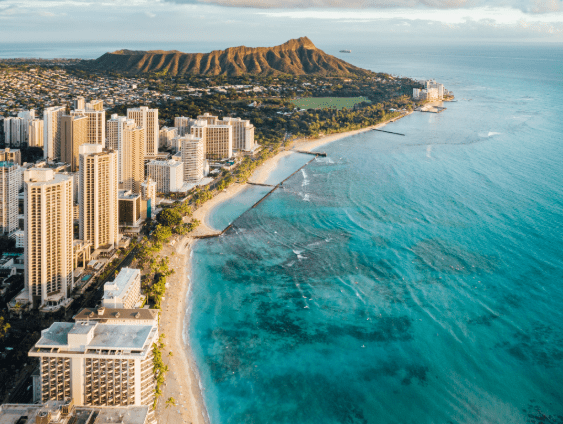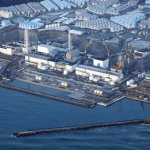A colossal 8.8-magnitude earthquake off Russia’s far eastern Kamchatka Peninsula has prompted widespread tsunami alerts across the Pacific, including Hawaii, where authorities warn that coastal areas could be hit by waves up to 10 feet high.
Massive Quake Unleashes Tsunami Threat Across Pacific
The quake struck early morning local time, shaking buildings and triggering panic across Russia’s far east. It didn’t take long before the ripple effect began radiating across the Pacific basin.
Tsunami warnings were swiftly issued by the Pacific Tsunami Warning Center. Officials in Hawaii are now bracing for the potential impact, as ocean modelling predicts powerful wave activity could hit parts of the islands—especially along the northern coasts.
“Do not risk being out at all near the shoreline when this wave comes,” urged Hawaii Governor Josh Green. “We will only give the all-clear when we feel that there’s total safety.”
Across the Hawaiian islands, coastal residents were urged to evacuate immediately. Emergency sirens echoed through towns, traffic piled onto highways leading inland, and schools cancelled after-school programmes. Harbours were closed, and all maritime vessels were ordered to leave the dock and head to deeper water.
Key Developments So Far
- A magnitude 8.8 earthquake struck Russia’s Kamchatka Peninsula
- Hawaii under tsunami warning, waves up to 10 feet predicted
- Sirens sounded in Honolulu, and a coastal evacuation was underway
- Schools and businesses closed, emergency protocols activated
- Japan and Alaska also issued warnings, though wave activity there remains low
- No casualties reported in Russia, though flooding and damage were observed
Authorities Urge Residents to Take Action
The Hawaii Emergency Management Agency stressed that tsunamis often arrive in multiple waves, with later surges being stronger. Officials warned against returning to the shoreline prematurely.
“Take Action! Destructive tsunami waves expected,” a statement read.
Coastal communities were advised to move to higher ground or upper floors of concrete buildings. Shelters were being set up across the islands as a precaution.
Hawaii tsunami fears surge after a massive earthquake off Russia’s coast. Waves up to 10 feet could hit, prompting urgent evacuations and warnings across the islands. Stay informed and safe as authorities monitor the situation.
Why Hawaii is Vulnerable to Distant Earthquakes
Although Hawaii is located thousands of miles from Kamchatka, the Pacific Ocean allows powerful tsunamis to travel vast distances with deadly force. The island chain’s unique coastal geography can intensify incoming waves, making even distant quakes a direct threat.
Experts explain that tsunami waves often build in strength as they reach shallow coastal areas. In this case, the wave energy is expected to focus on Hawaii more than Japan, despite both lying in the quake’s path.
Forecast models suggest that parts of the islands, especially the north-facing shores, could face waves exceeding 10 feet above regular tide levels. Residents have been told not to underestimate the situation, even if initial waves appear small.
History of Hawaii Tsunamis – A Painful Reminder
Hawaii has experienced devastating tsunamis before. These historical events serve as chilling reminders of the potential danger.
Notable Hawaii Tsunami Events:
| Year | Origin | Wave Height | Impact |
|---|---|---|---|
| 1923 | Kamchatka, Russia | Up to 8 metres | 1 death in Hawaii; widespread shock |
| 1946 | Aleutian Islands, Alaska | Over 17 metres | 159 killed, mostly in Hilo; massive damage |
- In 1923, a tsunami generated by a quake in Kamchatka reached Hawaii’s shores, claiming one life.
- The 1946 tsunami remains the deadliest in Hawaiian history. Striking without warning, it devastated Hilo, killing 159 people and causing immense destruction. This tragedy led to the creation of the Pacific Tsunami Warning Center.
What to Do – Safety First
For anyone currently in Hawaii, authorities urge the following:
- Evacuate coastal zones immediately
- Stay away from beaches and harbours
- Monitor official alerts via local radio, mobile apps, and emergency services
- Avoid driving unless evacuating – roads are congested with outbound traffic
- Remain in safe areas until the official all-clear is issued
Even after the first wave passes, the danger remains. Later waves can be more severe, and the tsunami event can last several hours.
Hawaii’s location in the Pacific makes it highly vulnerable to seismic activity from thousands of miles away. This current event underscores just how quickly nature can turn calm seas into a deadly threat. As history has shown, preparation and swift response can mean the difference between safety and disaster.
Residents are advised to remain vigilant, follow evacuation instructions, and avoid unnecessary risk until the situation stabilises.






